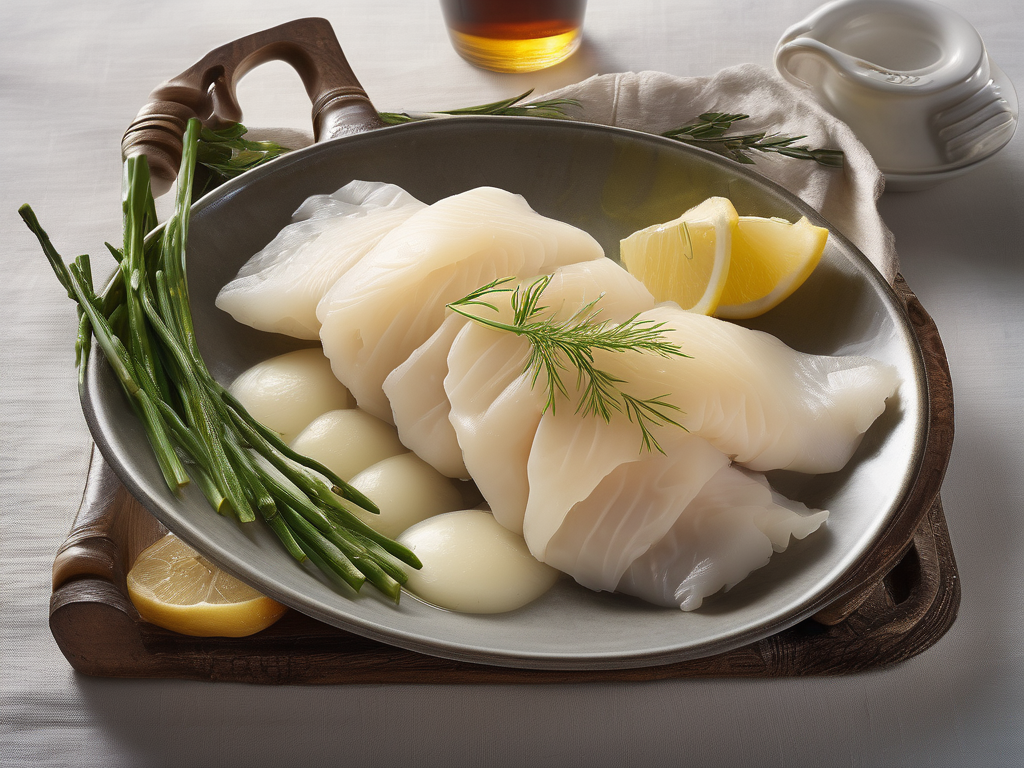
Is Your Lutefisk Safe to Eat? How to Tell if It Has Gone Bad
Get Your Free Food Safety Cheat Sheet
30 most common foods with instant answers. Print it and stick it on your fridge—completely free!
Is Your Lutefisk Safe to Eat? How to Tell if It Has Gone Bad
Lutefisk is a traditional Nordic dish made from dried whitefish, typically cod, that has been soaked in a lye solution. While it is a delicacy for many, proper handling and storage are crucial to prevent it from spoiling. In this blog post, we will explore how you can tell if lutefisk has gone bad and is unsafe to eat. (Lutefisk)
Understanding Lutefisk
Lutefisk is a unique dish with a gelatinous texture and a distinct flavor that is enjoyed by many Scandinavians. It is often served during the holiday season and is a staple in Nordic cuisine. The process of making lutefisk involves soaking dried fish in a lye solution for several days, followed by rinsing and boiling before consumption.
Key Points:
- Lutefisk is a traditional Nordic dish made from dried whitefish soaked in lye.
- It has a gelatinous texture and is popular during the holiday season.
- Proper preparation is essential to ensure its safety and taste.
Signs of Spoiled Lutefisk
Like any perishable food item, lutefisk can spoil if not stored or handled properly. Here are some signs that your lutefisk may have gone bad:
Visual Inspection
- Mold or Discoloration: If you notice mold growth or any unusual discoloration on the lutefisk, it is a clear indicator that it has spoiled.
- Slimy Texture: Fresh lutefisk should have a firm texture. If it feels slimy or overly soft, it is best to discard it.
Smell Test
- Foul Odor: Spoiled lutefisk will emit a strong, unpleasant odor that is different from its usual mild aroma. If it smells off or rotten, it is not safe to consume.
Taste
- Off Flavor: If the lutefisk tastes sour, bitter, or generally unpleasant, it is a sign that it has gone bad. Trust your taste buds and refrain from eating it.
Proper Storage and Handling Tips
To ensure the safety and longevity of your lutefisk, it is essential to follow proper storage and handling practices. Here are some tips to keep your lutefisk fresh:
- Refrigeration: Store lutefisk in the refrigerator at temperatures below 40°F (4°C) to slow down bacterial growth.
- Air-tight Container: Keep lutefisk in an air-tight container or sealed plastic wrap to prevent exposure to air and moisture.
- Consume Promptly: Lutefisk is best consumed within a few days of preparation to maintain its quality and taste.
- Freezing: If you need to store lutefisk for an extended period, consider freezing it in a freezer-safe container. Thaw it in the refrigerator before reheating. (Lutefisk)
Conclusion
In conclusion, lutefisk is a beloved traditional dish that requires proper handling and storage to prevent spoilage. By being vigilant for signs of spoilage, such as mold, off odors, or unusual textures, you can ensure that your lutefisk is safe to eat. Remember to follow recommended storage guidelines and consume lutefisk within a reasonable time frame for the best culinary experience. Enjoy this Nordic delicacy responsibly and savor its unique flavors with peace of mind.
Authoritative Food Safety References
These agencies and university labs inform every tip and health precaution we publish.
USDA FoodKeeper – Cold Storage Guidelines
Official refrigerator, freezer, and pantry timelines maintained by the U.S. Department of Agriculture.
Visit USDA FoodKeeperFDA Produce Safety Rule & Grower Guidance
Field-to-fridge handling practices that prevent contamination of fruits, vegetables, and leafy greens.
Visit FDA Produce SafetyCDC Foodborne Illness Prevention Hub
Surveillance-backed guidance on pathogens, symptoms, and steps to reduce foodborne illness risk.
Visit CDC Food SafetyUC Davis Postharvest Technology Center
University research detailing optimal storage atmospheres for produce after harvest.
Visit UC Davis PostharvestPenn State Extension – Home Food Preservation & Safety
Peer-reviewed extension bulletins on safe canning, chilling, and reheating practices.
Visit Penn State ExtensionGet Your Free Food Safety Cheat Sheet
30 most common foods with instant answers. Print it and stick it on your fridge—completely free! Want more? Upgrade to the complete guide with 70+ foods.
Scan your food directly and get instant safety info using our AI-powered camera feature.